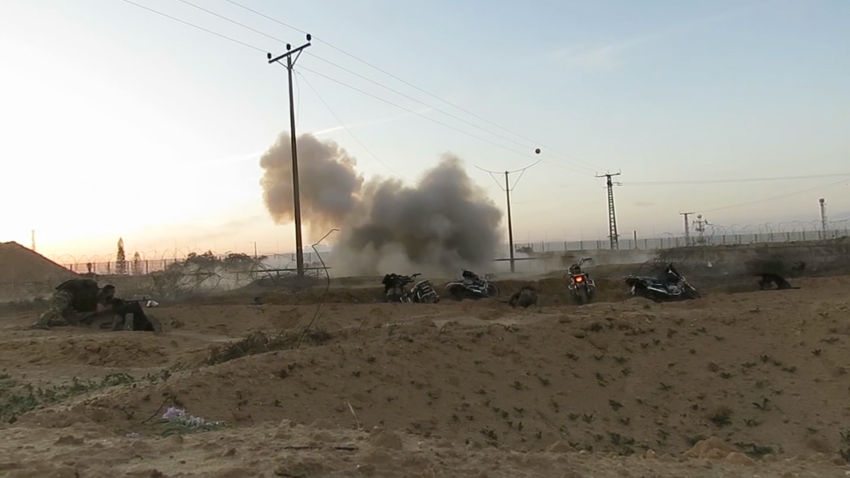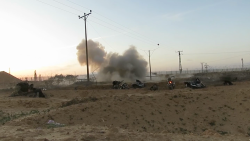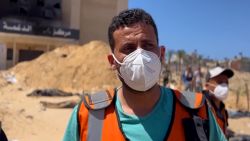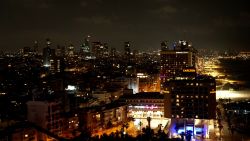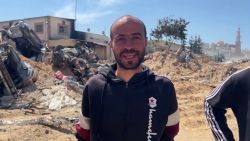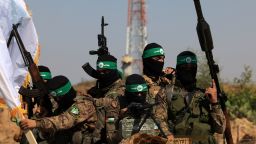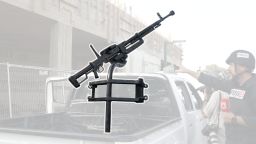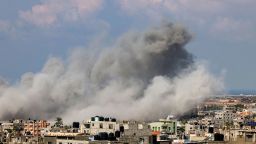When Hamas militants broke through the Gaza fence in this month’s unprecedented attack on Israel, the kibbutz of Mefalsim – less than two miles from the border – was on the front lines. Toting AK-47 rifles and grenade launchers, one group of militants headed straight for the community’s gates, while another group moved to destroy its generator, according to security videos and local residents.
That precision, local Israeli security personnel say, was no accident: The fighters seemed to have known exactly where they were headed.
CNN has reviewed documents that Israeli officials say were Hamas attack plans, which suggest that the group collected remarkably granular detail on its targets. But neither of the attacks went according to plan – thanks in part to a handful of volunteer guards who defended their neighbors in dramatic firefights.
Photos of the plan to attack Mefalsim were posted online by an Israeli first responder group, which said it was recovered from the body of a slain Hamas fighter. Two local Israeli security personnel told CNN they independently saw photos of the plan, and it closely matched the Hamas fighters’ tactics during the attack.
The color-coded document includes detailed information about the kibbutz’s guards and security. It says that one group of militants would break through the community’s fence, while others were ordered to “capture soldiers and civilians and to keep hostages” for negotiation.
Yarden Reskin, a member of Mefalsim’s volunteer security force who spent hours exchanging fire with militants – helping prevent any deaths inside the community – said he was shocked by the level of detail.
“They knew everything,” Reskin said. “They knew where are the gates, they knew where are the generators, they knew where is the armory, they knew basically how many of us on the security team… they had very, very good intel.”
Another purported Hamas document laying out plans to attack the nearby kibbutz of Sa’ad, which CNN obtained from a senior Israeli government official, was even more chilling. It listed the attackers’ goal as “inflicting the maximum possible human casualties.”
Like in Mefalsim, the plans didn’t come to fruition, with a first responder group and a local resident telling CNN that no residents had died inside Sa’ad.
The difference between the detailed plans and what occurred on the ground is a sign of the chaos that spread during the attack, as Hamas fighters encountered far less resistance from the Israeli military than they expected. Despite the billions of dollars Israel has spent securing its border and developing one of the world’s most renowned intelligence operations, its armed forces were caught off guard.
CNN translated the documents but has not independently verified their origin. Several spokespersons for Hamas, which has been designated a terrorist organization by the US, did not respond substantively to messages asking for comment or confirmation about the plans.
Experts said that the planning documents suggest that Hamas had meticulously collected intelligence on targeted communities to prepare for the weekend assault – even if those plans didn’t all come to fruition. Matthew Levitt, who directs a program on counterterrorism and intelligence at the Washington Institute for Near East Policy and reviewed the documents for CNN, said that “the granularity of this is very surprising.”
“There was a tremendous effort put into this,” he said. “This was a very carefully planned operation that involved the kind of intelligence processing and dissemination that I don’t think many people thought Hamas had.”
Hamas officials have claimed that its fighters were told not to kill women and children – and that such killings were the result of other unaffiliated militants who streamed across the Gaza border during the chaos of the attack. But Israeli officials and experts have argued that the planning documents show that inflicting civilian casualties was a central part of the group’s mission.
“The execution was not just some rogue actor,” Levitt said. The documents, he said, suggest that killing civilians “is exactly what they planned to do.”
Outnumbered and outgunned
Mefalsim, a community home to about 1,000 people, has long been a target of Hamas rockets because of its proximity to Gaza. So when locals received alerts about incoming rocket fire around 6:30 a.m. Saturday morning, they knew to head to their bomb shelters.
But the kibbutz residents soon realized this onslaught was different from any previous one. Reskin, who’s lived in Mefalsim his entire life, was huddling with his family in their home’s shelter when he heard a barrage of gunshots from nearby. “I kissed my wife, kissed my two little girls, and went out the door to see what I can do,” he said.
Reskin said that he was shocked to see black-clad fighters holding AK-47s just outside the kibbutz gates. He and a handful of other guards engaged in several skirmishes with the attackers for hours, often going up against larger numbers and firepower.
Security camera videos from Mefalsim posted on Telegram by a group of Israeli first responders show militants approaching the kibbutz’s main gate and shooting a man running toward it, before exchanging fire with guards. At one point, there were just three security guards “fighting against a force of about 15 or 16 terrorists,” another volunteer guard, Eli Levi, told CNN. Details of the battle were previously reported by the Wall Street Journal.
Later, Israeli military forces arrived and defeated additional militants approaching the community, Reskin and Levi said. While the attackers killed at least one civilian and potentially others outside the kibbutz gates, and a handful of residents were injured, no one was killed inside the community, according to Reskin and Levi.
Reskin said he later saw photos of the Hamas planning document, which lists details about the security force and estimates of how long it would take for reinforcements from the Israeli military to arrive.
The document is dated 2022 on its cover, potentially suggesting that the attack had been in the works for a year or longer – although another page lists the date June 15, 2023.
Seeing the document convinced him that the attack was “something they are planning for years,” Reskin said. “It’s not something you’re planning in weeks or months.”
Levi, who also saw a copy of the plan, said that the attack strategy appeared to have been followed by the Hamas militants. Some fighters had attacked a power generator, the location of which was marked on a map, he said, and others had tried to take control of the main gate.
“Most of the things actually happened as they were written down,” Levi said.
Colin P. Clarke, a senior research fellow at The Soufan Center, a security nonprofit, who reviewed alleged Hamas documents for CNN, said that the granular information the group had collected on individual kibbutzim raised the possibility that the terrorist group had human sources inside Israel.
“The level of detail is extraordinary,” Clarke said. The extent of planning “just shows a thinking about the long-game in a way that most terrorist groups don’t have the organization for,” he said.
Clarke said that the fact that the group was able to gather this level of information shows not only that “Hamas vastly improved in its operational capabilities, but Israel was asleep at the wheel.”
‘We thought we were safe’
One document, which a senior Israeli official provided to CNN, details plans to attack Sa’ad, a community of about 850 people a few miles south of Mefalsim.
The document, which was first reported by NBC News, says that Hamas fighters’ mission was “controlling the kibbutz and inflicting the maximum possible human casualties on it, and holding hostages.” CNN has not independently verified the document’s authenticity.
Similar to the Mefalsim plan, the document lists information about the kibbutz and its security, including detailed information about the number of guards protecting the community.
One group of fighters was directed to breach the kibbutz fence and destroy the guard room before “gathering hostages in the dining room and preparing to transfer a number of them to the strip.” A second group was directed to “collect hostages and hand them over to the first group.”
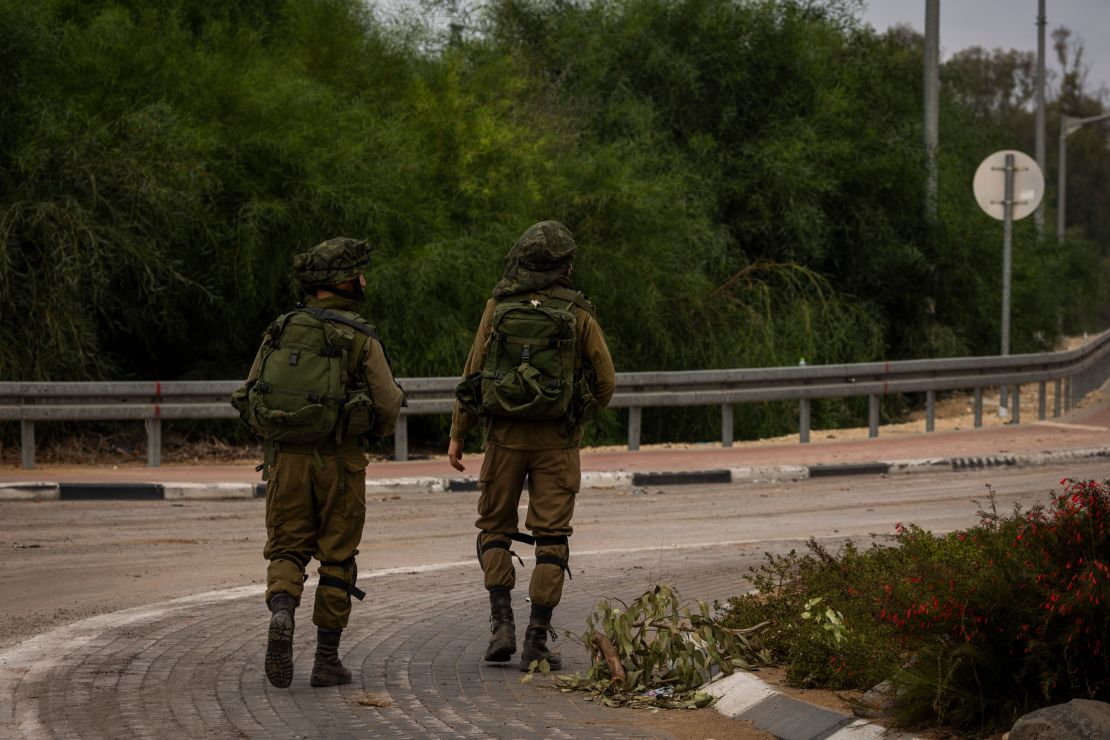
The document also says that the groups were supposed to “control” and “inspect” two schools, and search a “youth movement area.” And it includes in-depth satellite image maps of the Kibbutz and the surrounding area.
But like in Mefalsim, Hamas did not successfully attack Sa’ad – no one died, according to the first responders group. It’s unclear why: several other nearby communities – some of which were identified on a map in the plan – were attacked by Hamas fighters who killed civilians, according to Israeli officials.
Sarah Pollack, a resident of Sa’ad who spent Saturday holed up in her family’s bomb shelter, said the kibbutz was hit by a rocket from Gaza, and some residents who were outside the community during the attack were killed. But no militants entered the kibbutz, and no one was killed inside the gates, she said.
“We don’t know how to explain that,” she said in an interview from her hotel near Arad in Israel, where she and her family had been evacuated after the attack. “It’s a huge, huge question to us. It’s a miracle.”
Pollack said seeing the extensive details that Hamas had about Sa’ad in the planning documents was chilling. “Shockingly, the details are very accurate… horribly accurate,” she said.
Even though Sa’ad escaped with far less death and destruction than neighboring kibbutzim, Pollack said the attack had deeply shaken residents’ sense of safety in what she described as a “lovely, lush, beautiful green area with gardens and trees that we’re so proud of.”
“We thought there was a physical barrier between the Gaza Strip and Israel to protect us, we thought we were safe,” she said. “We were very wrong.”
CNN’s Audrey Ash and Scott Bronstein contributed to this report.






